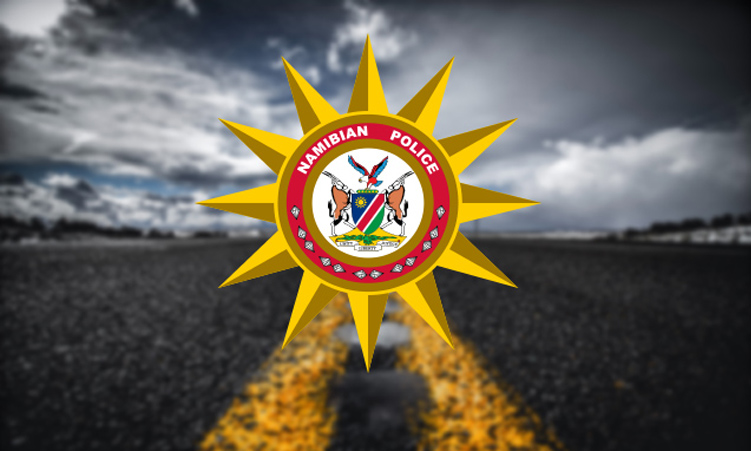James Hamupanda Kauluma, born c 1932; died April 21 2007 BISHOP James Kauluma, who has died from prostate cancer aged 75, was bishop of the Anglican church in then South West Africa at the height of the struggle that finally led to the conversion of South Africa’s apartheid colony into an independent Namibia in 1990.
Kauluma belonged to a group of church leaders who gave unstinting support to the liberation movement, the South West Africa People’s Organisation (Swapo), which the South African government in Pretoria had branded as Marxist. The slur was for western consumption, but black Namibians, the most Christianised people in Africa, knew otherwise.EARLY YEARS The route to becoming his country’s first black Anglican bishop began in a village in Owambo in 1932 – there were no birth records in those days.Six years in a mission school were followed by a stint as a migrant worker in the De Beers diamond mines, and later he became a court interpreter.At the same time he began his way up the church hierarchy, heading south to attend Bible college in Pretoria, and later, in Kenya, he studied with the Church Army, returning to work among migrants in the fish processing port, Walvis Bay.In 1965, Kauluma embarked on 12 years of study and work in the west – in Grantham, Lincolnshire, he was ordained deacon, and later, in New York, he graduated to the priesthood.He was by now married to Sally Camp, white and from Brooklyn, who had taught at St Mary’s Odibo, an Anglican mission school on the Angolan border.Kauluma’s fortunes changed dramatically as the liberation war hotted up.Several Anglicans – American, South African and British – had been deported for siding with Swapo.The most prominent of these was Colin Winter, the flamboyant bishop of Damaraland (as the diocese was then called), who became bishop-in-exile – he would slip across the porous northern border to baptise parishioners.EYE OF THE STORM In 1978, Kauluma was consecrated suffragan bishop of Damaraland at a ceremony in Westminster Abbey, London.Though not in charge, Winter enlivened the service, a cheerful affair with the singing of liberation songs and some discreet dancing.The abbey had never seen anything like it.Kauluma returned to Namibia.Winter died in 1981, and Kauluma became the first black bishop of the diocese.Having to fill Winter’s shoes was no easy task for this laid-back man.He was not a good speaker but he was outspoken, writing to the Times in London about South Africa’s occupation of the country, which had been declared illegal by the United Nations and the Hague international court of justice.He made several trips to the United States and Europe to put the case for his country’s independence.On Sundays, in Anglican pulpits across the country, his priests chose telling texts from the Gospels to underline the harshness of their lives under the occupation.Kauluma regularly visited the Anglican schools and churches that lined the tempestuous border.They were at the eye of the storm.At Odibo, the military removed the bells from St Mary’s church, accusing the ringers of relaying messages in code.These were precarious outings: his highly visible Land Rover could have detonated a land mine that the South Africans might conveniently blame on Swapo.On one occasion he was shot at while trying to protect schoolchildren.The church’s main school in the north, at Odibo, was forced to close.In the Namibian council of churches, founded in 1978, the Anglicans, Lutherans and Roman Catholics ran a formidable ecumenical consortium, which more than any other sector of society expressed the real wishes of the people.If the Finnish-educated Lutherans, who had the largest following in the populous north, were the most prominent, Kauluma’s church also played an influential role in the achievement of an independent Namibia – the “fifth province” South Africa was unceremoniously forced to quit in 1990.In 1983, Kauluma received an honorary doctorate of divinity from the General Theological Seminary in New York.He retired in 1998.He is survived by Sally and two daughters.Friday May 4 2007, The GuardianThe slur was for western consumption, but black Namibians, the most Christianised people in Africa, knew otherwise.EARLY YEARS The route to becoming his country’s first black Anglican bishop began in a village in Owambo in 1932 – there were no birth records in those days.Six years in a mission school were followed by a stint as a migrant worker in the De Beers diamond mines, and later he became a court interpreter.At the same time he began his way up the church hierarchy, heading south to attend Bible college in Pretoria, and later, in Kenya, he studied with the Church Army, returning to work among migrants in the fish processing port, Walvis Bay.In 1965, Kauluma embarked on 12 years of study and work in the west – in Grantham, Lincolnshire, he was ordained deacon, and later, in New York, he graduated to the priesthood.He was by now married to Sally Camp, white and from Brooklyn, who had taught at St Mary’s Odibo, an Anglican mission school on the Angolan border.Kauluma’s fortunes changed dramatically as the liberation war hotted up.Several Anglicans – American, South African and British – had been deported for siding with Swapo.The most prominent of these was Colin Winter, the flamboyant bishop of Damaraland (as the diocese was then called), who became bishop-in-exile – he would slip across the porous northern border to baptise parishioners. EYE OF THE STORM In 1978, Kauluma was consecrated suffragan bishop of Damaraland at a ceremony in Westminster Abbey, London.Though not in charge, Winter enlivened the service, a cheerful affair with the singing of liberation songs and some discreet dancing.The abbey had never seen anything like it.Kauluma returned to Namibia.Winter died in 1981, and Kauluma became the first black bishop of the diocese.Having to fill Winter’s shoes was no easy task for this laid-back man.He was not a good speaker but he was outspoken, writing to the Times in London about South Africa’s occupation of the country, which had been declared illegal by the United Nations and the Hague international court of justice.He made several trips to the United States and Europe to put the case for his country’s independence.On Sundays, in Anglican pulpits across the country, his priests chose telling texts from the Gospels to underline the harshness of their lives under the occupation.Kauluma regularly visited the Anglican schools and churches that lined the tempestuous border.They were at the eye of the storm.At Odibo, the military removed the bells from St Mary’s church, accusing the ringers of relaying messages in code.These were precarious outings: his highly visible Land Rover could have detonated a land mine that the South Africans might conveniently blame on Swapo.On one occasion he was shot at while trying to protect schoolchildren.The church’s main school in the north, at Odibo, was forced to close.In the Namibian council of churches, founded in 1978, the Anglicans, Lutherans and Roman Catholics ran a formidable ecumenical consortium, which more than any other sector of society expressed the real wishes of the people.If the Finnish-educated Lutherans, who had the largest following in the populous north, were the most prominent, Kauluma’s church also played an influential role in the achievement of an independent Namibia – the “fifth province” South Africa was unceremoniously forced to quit in 1990.In 1983, Kauluma received an honorary doctorate of divinity from the General Theological Seminary in New York.He retired in 1998.He is survived by Sally and two daughters.Friday May 4 2007, The Guardian
Stay informed with The Namibian – your source for credible journalism. Get in-depth reporting and opinions for
only N$85 a month. Invest in journalism, invest in democracy –
Subscribe Now!






